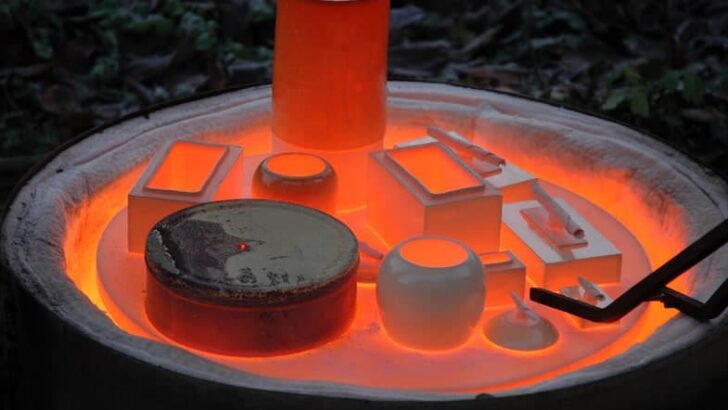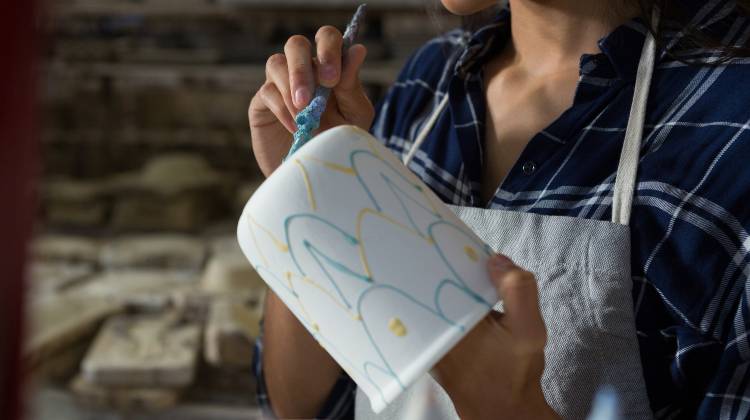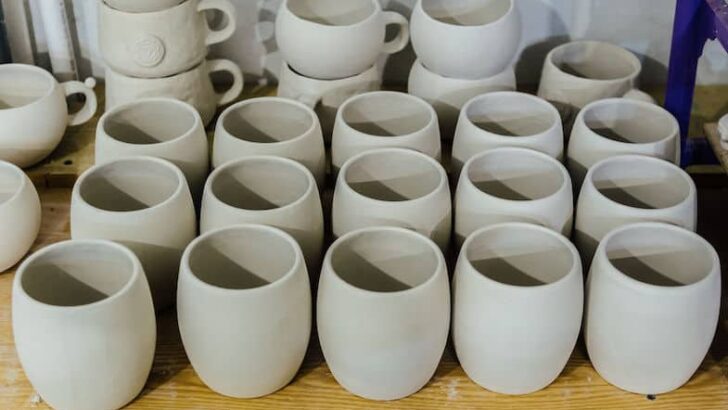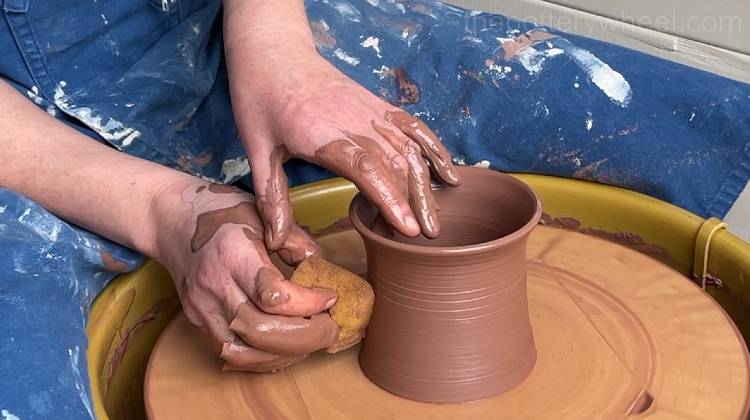Your cart is currently empty!
Lesley
-

What is Raku Pottery? A Beginners Guide on How To Make Raku
One of the things I love about pottery and ceramics is that they are very elemental. With its dramatic mix of earth, fire, air, and water raku firing is one of the grittier approaches to pottery. So, what is raku pottery, and how is it made? Raku is a low fire process, reaching around 1830F…
-

Do You Have to Bisque Fire Pottery? Some Single Firing Tips
Usually, pottery is fired two times. The first firing is the bisque fire, where the clay is turned into ceramic. The second firing is the glaze fire, where the pottery is glazed. But do you have to bisque fire pottery? Or can you skip the bisque firing stage? No, you don’t always have to bisque…
-

Does Underglaze Stick to the Kiln Shelf?
Pottery glaze melts when it is fired and will stick to the kiln shelf if it isn’t wiped off. But what about underglaze? Can you put it on the bottom of your pots, or does underglaze stick to the kiln shelf? Many types of underglaze don’t stick to the kiln shelf when they are fired. …
-

3 Ways to Rehydrate Bone Dry Clay Pots – What Works?
There are a few situations where you might need to rehydrate bone dry clay. Perhaps you have a bag of unused clay that has dried out in a big block. Maybe you have some dry unused clay scraps, or perhaps your pottery has become too dry to trim. Either way, there are some simple ways…
-

Can Slip Be Used on Bone Dry Clay? You’ll be Surprised
Clay slip is made from a mixture of clay and water. It’s the magic tool in pottery that allows you to join pieces of clay, decorate them, and also to mend your pots now and then. But can slip be used on bone dry clay, or does your clay need to be fresh or leather…
-

Can You Use Air Dry Clay on a Potter’s Wheel? – My Review
The benefit of air dry clay is that it doesn’t need to be fired in a pottery kiln. But can you use air dry clay on a potter’s wheel? Or are you better off using it for hand building? Some air dry clays are made out of materials that feel and behave like plastic. These…
-

What is Bone Dry Clay? And How To Tell If Clay is Bone Dry
To survive the firing process, your pottery needs to be bone-dry clay. Firing damp pottery can cause it to explode in the kiln. But what does bone dry mean and how can you tell if your clay is dry enough to fire? Clay is bone dry when it has lost all the moisture it possibly…





